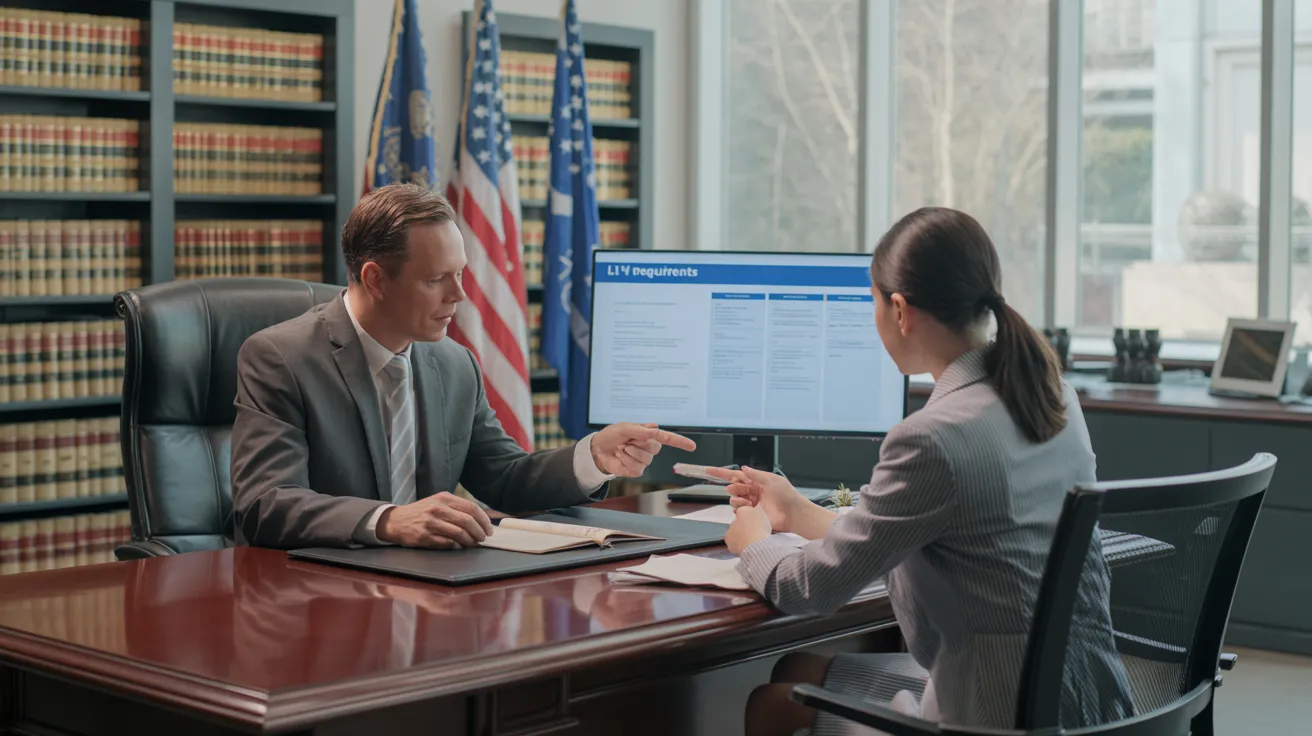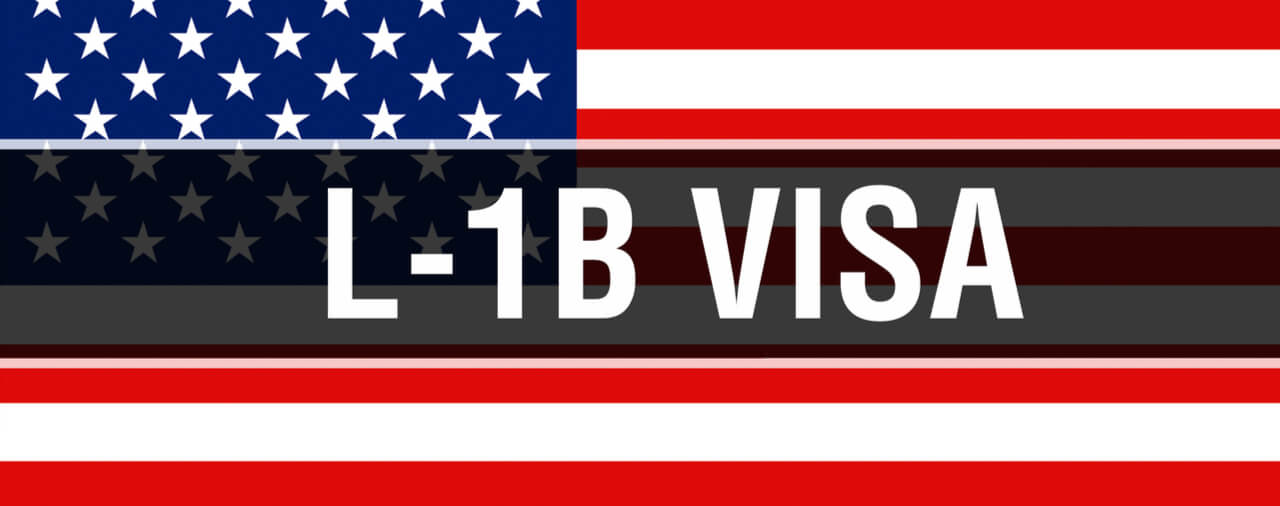Whatever You Required to Learn About the L1 Visa: Benefits, Needs, and More
The L1 Visa serves as a crucial tool for multinational firms seeking to move employees to the United States, promoting both operational performance and the transfer of specialized understanding. With distinctive classifications for execs and specialized specialists, this visa offers various advantages, consisting of potential paths to long-term residency. Understanding the qualification needs and application process is essential for a successful shift. As we check out the details of the L1 Visa, it becomes clear that navigating its intricacies is extremely important for companies aiming to utilize international talent efficiently. What obstacles might you encounter in the process?
Introduction of the L1 Visa

Kinds Of L1 Visas

Numerous kinds of L1 visas cater to the diverse demands of international companies seeking to transfer staff members to the United States. Both key categories of L1 visas are L1A and L1B, each developed for details roles and obligations within an organization. L1 Visa.The L1A visa is meant for managers and executives. This classification allows companies to transfer people who hold supervisory or executive positions, enabling them to oversee procedures in the U.S. This visa stands for a preliminary period of up to three years, with the opportunity of expansions for a total amount of up to 7 years. The L1A visa is specifically beneficial for business seeking to establish a solid leadership visibility in the U.S. market.On the various other hand, the L1B visa is designated for employees with specialized knowledge. This consists of individuals who have innovative competence in details locations, such as exclusive technologies or one-of-a-kind processes within the firm. The L1B visa is also legitimate for a preliminary three-year period, with extensions available for as much as five years. This visa group is suitable for firms that need employees with specialized abilities to boost their procedures and maintain an affordable edge in the U.S.Both L1A and L1B visas enable dual intent, indicating that visa owners can request permanent residency while on the visa. Comprehending the differences between these 2 classifications is important for services intending to browse the intricacies of staff member transfers to the United States properly
Qualification Demands
To receive an L1 visa, both the company and the employee must meet details eligibility criteria established by united state immigration authorities. The L1 visa is designed for intra-company transferees, permitting international firms to transfer employees to their united state offices.First, the company should be a certifying organization, which means it needs to have a parent firm, branch, subsidiary, or affiliate that is operating both in the U.S. and in the foreign nation. This relationship is important for showing that the staff member is being transferred within the exact same company structure. The company should additionally have been doing company for at the very least one year in both locations.Second, the employee should have been employed by the international company for at the very least one constant year within the 3 years coming before the application. This work must remain in a managerial, exec, or specialized knowledge capacity. For L1A visas, which provide to supervisors and execs, the staff member should demonstrate that they will continue to run in a similar ability in the U.S. For L1B visas, meant for staff members with specialized expertise, the specific should possess special know-how that contributes substantially to the firm's procedures.
Application Process
Steering the application procedure for an L1 visa entails numerous vital steps that should be finished accurately to ensure an effective end result. The initial step is to identify the appropriate classification of the L1 visa: L1A for supervisors and executives, or L1B for staff members with specialized understanding. This distinction is significant, as it influences the documentation required.Once the classification is identified, the U.S. company have to submit Form I-129, Petition for a Nonimmigrant Employee. This form must include in-depth info concerning the firm, the employee's role, and the nature of the work to be performed in the U.S. Accompanying documents commonly consists of proof of the partnership between the united state and international entities, evidence of the worker's qualifications, and details regarding the job offer.After submission, the U.S. Citizenship and Immigration Solutions (USCIS) will evaluate the petition. If approved, the employee will be informed, and they can then get the visa at a united state consulate or embassy in their home country. This entails completing Kind DS-160, the Online Nonimmigrant copyright, and arranging an interview.During the interview, the applicant must provide different documents, consisting of the approved Kind I-129, proof of employment, and any added sustaining proof. Following the interview, if the visa is approved, the staff member will get a visa stamp in their copyright, enabling them to get in the united state to benefit the sponsoring company. Correct preparation and detailed documents are crucial to steering this process effectively.
Benefits of the L1 Visa
One of the significant advantages of the L1 visa is its capability to facilitate the transfer of key employees from worldwide offices to the United States. This visa is specifically advantageous for international firms seeking to keep uniformity in operations and leadership across boundaries. By enabling executives, managers, and specialized workers to operate in the united state, organizations can guarantee that their most important skill is available to drive service objectives.Another considerable advantage of the L1 visa is its fairly straightforward application procedure contrasted to various other job visas. Organizations can seek for the L1 visa without the requirement for a labor qualification, which improves the recruitment of foreign staff members. L1 Visa Requirements Additionally, the visa can be provided for an initial duration of up to 3 years, with the opportunity of expansions, promoting lasting assignments.The L1 visa likewise gives a path to irreversible residency. Workers on L1A visas (for managers and execs) can obtain a copyright after one year, expediting their change to irreversible status. This function is an appealing motivation for gifted individuals looking for stability in the U.S. workforce.Additionally, L1 visa holders can bring their instant member of the family to the U.S. under L2 standing, allowing spouses and youngsters to reside and examine in the nation, enhancing the total allure of this visa category. On the whole, the L1 visa serves as an important device for worldwide organizations, cultivating cross-border collaboration and talent movement.
Usual Obstacles
While the L1 visa offers various advantages for international companies and their workers, it is not without its obstacles. One significant hurdle is the stringent documents and eligibility demands enforced by the U.S. Citizenship and Immigration Provider (USCIS) Business have to provide comprehensive evidence of the international worker's certifications, the nature of business, and the certifying relationship in between the U.S. and international entities. This process can be time-consuming and might call for legal competence to browse successfully.Another obstacle is the possibility for examination during the petition process. USCIS police officers might question the legitimacy of the company operations or the staff member's role within the organization. This examination can cause delays or perhaps denials of the copyright, which can significantly influence the firm's functional plans and the employee's profession trajectory.Furthermore, the L1 visa is tied to the sponsoring company, which implies that task adjustments can make complex the visa standing. If an L1 visa holder wants to switch over employers, they have to often seek a different visa category, which can include complexity to their migration journey.Lastly, maintaining compliance with L1 visa guidelines is important. Companies should ensure that their employee's duty aligns with the preliminary application and that business remains to fulfill the qualification demands. Failing to do so can lead to abrogation of the visa, impacting both the staff member and the organization. These difficulties require detailed prep work and recurring administration to guarantee a successful L1 visa experience.
Tips for Success
To successfully navigate the L1 visa procedure, thorough preparation is critical. Start by completely recognizing the specific needs for the L1 visa category you are obtaining, whether L1A for managers and execs or L1B for employees with specialized knowledge. Collect all necessary paperwork early in the process, including evidence of your work background, business framework, and the nature of the business operations.Engage legal advise experienced in migration regulation to assist you with the complexities of the application. A lawyer can assist assure that your application is full, precise, and engaging. They can likewise aid in getting ready for possible ask for evidence (RFEs) by proactively resolving locations that may raise questions.Additionally, preserve clear interaction with your employer, who have to offer vital assistance for your application. L1 Visa. Validate that they understand their duties, consisting of submitting the needed requests and providing paperwork that validates your role in the organization.Prepare for the visa meeting by exercising answers to typical inquiries concerning your professional background and the nature of your work. Demonstrating confidence and clearness can greatly affect the outcome of your application
Often Asked Inquiries
Can Household Members Accompany L1 Visa Holders?
Yes, relative can come with L1 visa owners. Partners and unmarried children under 21 years of ages are eligible for L2 visas, which allow them to live and research in the United States during the L1 holder's keep.
For How Long Can L1 Visa Holders Keep in the united state?
L1 visa holders can originally remain in the U.S. for as much as 3 years (L1 Visa Requirements). This duration may be extended, allowing an optimum keep of 7 years for L1A visa owners and 5 years for L1B visa owners
Is the L1 Visa a Twin Intent Visa?

Can L1 Visa Owners Make An Application For a Permit?
Yes, L1 visa holders can request an environment-friendly card - L1 Visa Lawyer. The L1 visa supports twin intent, permitting owners to seek long-term residency while maintaining their non-immigrant standing, assisting in a smoother transition to a permit
What Takes place if an L1 copyright Is Refuted?
If an L1 copyright is rejected, the applicant may obtain a notice outlining the factors for rejection. L1 Visa Requirements. They can appeal the choice, reapply, or discover alternate visa alternatives relying on their scenarios and credentials
Conclusion
In recap, the L1 Visa offers as a necessary instrument for multinational business seeking to move employees to the United States. Understanding the distinctions between L1A and L1B categories, along with the qualification demands and application processes, is vital for successful navigation of this non-immigrant classification. The advantages used, including streamlined applications and pathways to long-term residency, better improve its appeal. Resolving usual challenges effectively can lead to a more desirable outcome in the copyright process.